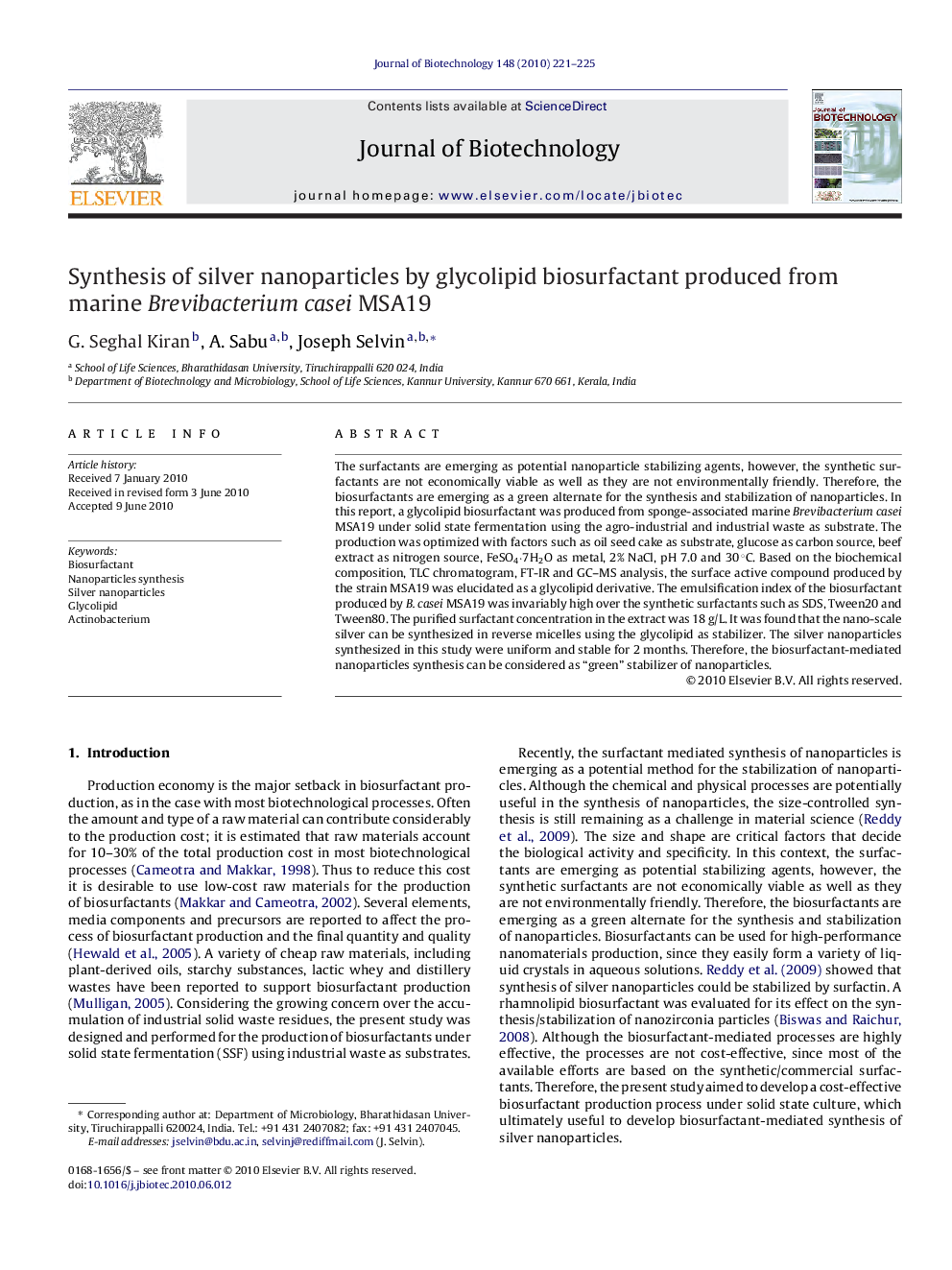| Article ID | Journal | Published Year | Pages | File Type |
|---|---|---|---|---|
| 24054 | Journal of Biotechnology | 2010 | 5 Pages |
The surfactants are emerging as potential nanoparticle stabilizing agents, however, the synthetic surfactants are not economically viable as well as they are not environmentally friendly. Therefore, the biosurfactants are emerging as a green alternate for the synthesis and stabilization of nanoparticles. In this report, a glycolipid biosurfactant was produced from sponge-associated marine Brevibacterium casei MSA19 under solid state fermentation using the agro-industrial and industrial waste as substrate. The production was optimized with factors such as oil seed cake as substrate, glucose as carbon source, beef extract as nitrogen source, FeSO4·7H2O as metal, 2% NaCl, pH 7.0 and 30 °C. Based on the biochemical composition, TLC chromatogram, FT-IR and GC–MS analysis, the surface active compound produced by the strain MSA19 was elucidated as a glycolipid derivative. The emulsification index of the biosurfactant produced by B. casei MSA19 was invariably high over the synthetic surfactants such as SDS, Tween20 and Tween80. The purified surfactant concentration in the extract was 18 g/L. It was found that the nano-scale silver can be synthesized in reverse micelles using the glycolipid as stabilizer. The silver nanoparticles synthesized in this study were uniform and stable for 2 months. Therefore, the biosurfactant-mediated nanoparticles synthesis can be considered as “green” stabilizer of nanoparticles.
